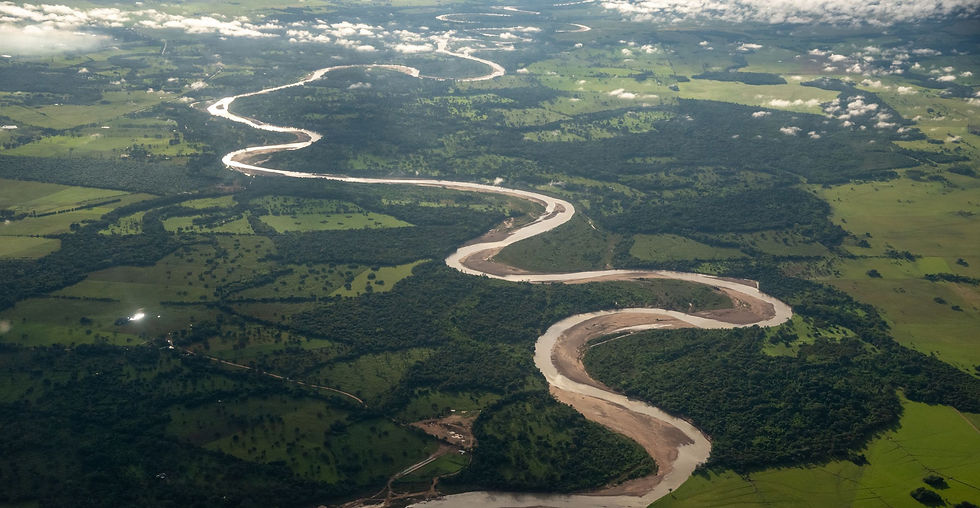How the Homeless Are Changing the Landscape of Coyote Creek
- Annette McMillan
- Jan 14
- 3 min read
I’ve always appreciated the natural world. I vividly remember my Earth Science class and how much I loved learning about natural science. In that class, I learned that rivers and creeks naturally meander back and forth. They do this to keep a consistent gradient and to evenly distribute energy. Unfortunately, many of our local creeks don’t have this beautiful feature due to being straightened and concretized as a flood prevention. For the most part, Coyote Creek has escaped this fate, so it is mostly left to meander naturally, as it should.

Still, there is much change occurring along the banks of Coyote Creek that doesn't involve a team of engineers. Instead, the unhoused have made themselves provisional homes along the banks of the creek. Some of these “homes” have been in place for over two years. With that, comes a lot of damage to the surrounding area.

The homeless along Coyote Creek have changed the river banks permanently. There are steps carved into the hillside to gain access to steep areas, shelves carved into the walls and even artwork or writings have been found carved into the clay. Deep holes and giant caverns dug into the ground will leave long lasting changes to the landscape.
In addition, we’ve found areas where multiple trees had been partially cut or entirely cut down. At that same site were smoldering logs and standing trees that had been burnt with no one in sight. We’ve seen clothes washing stations directly at the water’s edge, with carpet or Astroturf laid down and hanging in the water. Once those materials get into the creek, it is extremely difficult or impossible to remove.
More disturbing, are the enormous craters dug into the earth for elaborate shelters. This former encampment had been in place for approximately 2 years. This single occupant was suspected of cutting down over 6 trees and burning many of the standing trees as well. On two separate visits, we found (and removed) hand saws found in the area. Above this camp, towards the floodplain, we found a 6-7 foot hole in the ground. It did have a ladder in there and strangely, a bicycle. Dangerous, nonetheless.

Many homeless people plant gardens around their camps and most of those plants are non-native. Generally, we see a variety of succulent houseplants that get planted near the creek or along Coyote Creek Trail. Additionally, the giant reed (Arundo donax), a highly invasive plant that chokes the creek, is thought to have originated in eastern Asia.
When does it all end? Hopefully this year. San Jose made some good strides last year with Mayor Mahan arranging some housing for these folks, but the number of unhoused is still incredibly high. Of the approximately 6,340 unhoused, an estimated 4,411 of those individuals live on the streets or along creeks or highways. They really can’t stay near the water because so much of their trash goes directly into the creek and that trash potentially ends up in the Bay.

Last year, the San Francisco Bay Regional Water Quality Control Board issued a directive that they could fine the city up to $60,000 per day for every pollutant found in the waterway. In response, Mayor Mahan is working to move the homeless away from San Jose waterways by the deadline of June 2025.
Additionally, Valley Water issued an ordinance on November 26, 2024 that establishes new regulations regarding camping or encampments on Valley Water-owned land. The intention of this ordinance is not to punish the homeless. The main goals of this ordinance are to protect the waterways and the species that rely on them. Also, Valley Water has a responsibility to maintain their property to be prepared for any future floods.

Changes are coming in 2025. I’ve already witnessed evidence of action being taken along Coyote Creek behind Olinder Elementary School. A lot of the encampments that had been present for years are gone. All that’s left are the steps, plants and dug out areas. And trash, of course.
References
Chu Joyce, "Where do I go? Unhoused residents living along San Jose creek dread future", https://www.nbcbayarea.com/news/local/south-bay/san-jose-unhoused-residents-creeks/3550342/
City of San Jose, "2023 PIT Report Executive Summary: Point in time homeless census", https://www.sanjoseca.gov/your-government/departments-offices/housing/resource-library/homeless-reports/homeless-reports-executive-summary
Valley Water Board of Directors approves ordinance to reduce encampments along creeks, waterways and water supply facilities. https://www.valleywater.org/news-events/news-releases/valley-water-board-directors-approves-ordinance-reduce-encampments-along

Comentários